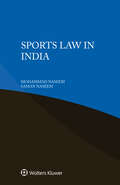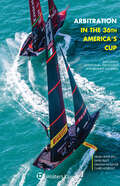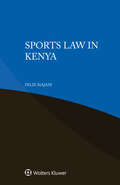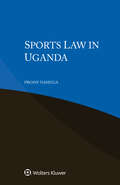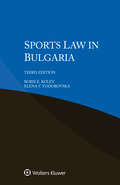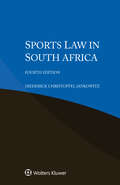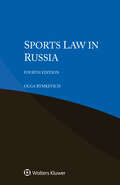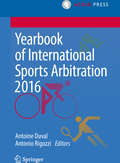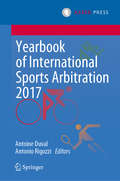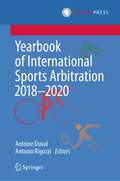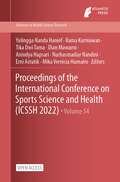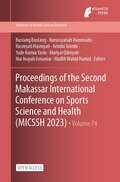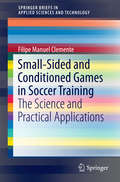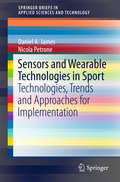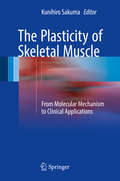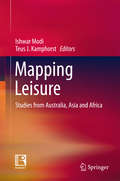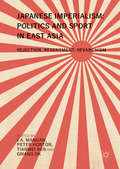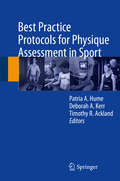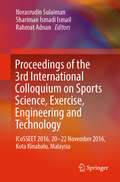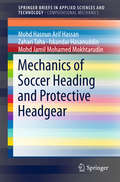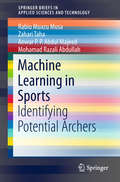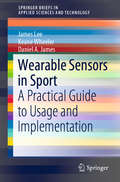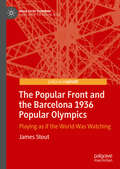- Table View
- List View
Sports Law in India
by Mohammad Naseem Saman Naseem<span style="mso-fareast-font-family:"";mso-bidi-font-family:"Times New Roman"; mso-ansi-language:EN-GB">Derived from the renowned multi-volume <span style="mso-fareast-font-family:"";mso-bidi-font-family:"Times New Roman"; mso-ansi-language:EN-GB">International Encyclopaedia of Laws<span style="mso-fareast-font-family:"";mso-bidi-font-family:"Times New Roman"; mso-ansi-language:EN-GB">, this practical analysis of sports law in India deals with the regulation of sports activity by both public authorities and private sports organizations. The growing internationalization of sports inevitably increases the weight of global regulation, yet each country maintains its own distinct regime of sports law and its own national and local sports organizations. Sports law at a national or organizational level thus gains a growing relevance in comparative law. <span style="mso-fareast-font-family:"";mso-bidi-font-family:"Times New Roman"; mso-ansi-language:EN-GB"> <span style="mso-fareast-font-family:"";mso-bidi-font-family:"Times New Roman"; mso-ansi-language:EN-GB">The book describes and discusses both state-created rules and autonomous self-regulation regarding the variety of economic, social, commercial, cultural, and political aspects of sports activities. Self- regulation manifests itself in the form of by-laws, and encompasses organizational provisions, disciplinary rules, and rules of play. However, the trend towards more professionalism in sports and the growing economic, social and cultural relevance of sports have prompted an increasing reliance on legal rules adopted by public authorities. This form of regulation appears in a variety of legal areas, including criminal law, labour law, commercial law, tax law, competition law, and tort law, and may vary following a particular type or sector of sport. It is in this dual and overlapping context that such much-publicized aspects as doping, sponsoring and media, and responsibility for injuries are legally measured. <span style="mso-fareast-font-family:"";mso-bidi-font-family:"Times New Roman"; mso-ansi-language:EN-GB"> <span style="mso-fareast-font-family:"";mso-bidi-font-family:"Times New Roman"; mso-ansi-language:EN-GB">This monograph fills a gap in the legal literature by giving academics, practitioners, sports organizations, and policy makers access to sports law at this specific level. Lawyers representing parties with interests in India will welcome this very useful guide, and academics and researchers will appreciate its value in the study of comparative sports law.
Arbitration in the 36th America's Cup: Including Additional Previously Unpublished Material
More than the most prestigious regatta and match race in the sport of sailing, the America’s Cup is a test of boat design, sail design, and management skills. It is not surprising that its passionate skippers, builders, and managers often become embroiled in disputes. Recognizing this, and the need to deal quickly and professionally with any divergency, an arbitration panel has become an established part of the Cup’s organization. This book—the fifth of a series that over time constitutes a unique corpus of decisions rendered over more than twenty years—compiles all the directions and decisions issued by the 36th America’s Cup Arbitration Panel in the context of the nineteen cases submitted to it, as well as all supporting documents elucidating the context in which the decisions were issued. In addition to all the decisions, the following are also included: <p style="margin-bottom:0in;margin-bottom:.0001pt;mso-line-height-alt: 10.0pt" class="MsoBodyText"> the Protocol of the 36th America’s Cup and amendments made thereto; the 36th America’s Cup Arbitration Panel Rules of Procedure; applicable versions of the World Sailing Racing Rules, the AC75 Class Rule, and the so-called Prada Cup Conditions and Match Conditions; previously unpublished documents related to proceedings which have led to the amendment and/or interpretation of the Deed of Gift by the Supreme Court of the State of New York; and previously unpublished court-related material pertaining to the key Mercury Bay case (1987-1990). An extensive and valuable introduction provides detailed historical and factual context. Expert commentary addresses issues of special interest decided by the 36th America’s Cup Arbitration Panel, including privileged insight into the previously undocumented dispute resolution during the 35th America’s Cup (2013-2017) and the World Intellectual Property Organization’s Electronic Case Management Facility (ECAF). A table containing a summary of the subject matter of each decision and a keyword index help find which argument is dealt with in which decision. <p style="margin-bottom:0in;margin-bottom:.0001pt;mso-line-height-alt: 10.0pt" class="MsoBodyText"> Because arbitration plays a key role in this context, and because what happens in the America's Cup is of general interest to the sport and arbitration communities, this book’s many insights into the kinds of issues that fuel disputes in sports events offer a significant extension of the knowledge base available to lawyers, arbitrators, and scholars in several branches of law and legal practice.
Sports Law in Kenya
by Felix Majani<span style="mso-fareast-font-family:"";mso-bidi-font-family:"Times New Roman"; mso-ansi-language:EN-GB">Derived from the renowned multi-volume <span style="mso-fareast-font-family:"";mso-bidi-font-family:"Times New Roman"; mso-ansi-language:EN-GB">International Encyclopaedia of Laws<span style="mso-fareast-font-family:"";mso-bidi-font-family:"Times New Roman"; mso-ansi-language:EN-GB">, this practical analysis of sports law in Kenya deals with the regulation of sports activity by both public authorities and private sports organizations. The growing internationalization of sports inevitably increases the weight of global regulation, yet each country maintains its own distinct regime of sports law and its own national and local sports organizations. Sports law at a national or organizational level thus gains a growing relevance in comparative law. <span style="mso-fareast-font-family:"";mso-bidi-font-family:"Times New Roman"; mso-ansi-language:EN-GB"> <span style="mso-fareast-font-family:"";mso-bidi-font-family:"Times New Roman"; mso-ansi-language:EN-GB">The book describes and discusses both state-created rules and autonomous self-regulation regarding the variety of economic, social, commercial, cultural, and political aspects of sports activities. Self- regulation manifests itself in the form of by-laws, and encompasses organizational provisions, disciplinary rules, and rules of play. However, the trend towards more professionalism in sports and the growing economic, social and cultural relevance of sports have prompted an increasing reliance on legal rules adopted by public authorities. This form of regulation appears in a variety of legal areas, including criminal law, labour law, commercial law, tax law, competition law, and tort law, and may vary following a particular type or sector of sport. It is in this dual and overlapping context that such much-publicized aspects as doping, sponsoring and media, and responsibility for injuries are legally measured. <span style="mso-fareast-font-family:"";mso-bidi-font-family:"Times New Roman"; mso-ansi-language:EN-GB"> <span style="font-size:12.0pt;font-family:"Times New Roman",serif; mso-fareast-font-family:"";mso-font-kerning:.5pt;mso-ansi-language:EN-GB; mso-fareast-language:HI;mso-bidi-language:HI">This monograph fills a gap in the legal literature by giving academics, practitioners, sports organizations, and policy makers access to sports law at this specific level. Lawyers representing parties with interests in Kenya will welcome this very useful guide, and academics and researchers will appreciate its value in the study of comparative sports law.
Sports Law in Uganda
by Prossy NamugaDerived from the renowned multi-volume International Encyclopaedia of Laws, this practical analysis of sports law in Uganda deals with the regulation of sports activity by both public authorities and private sports organizations. The growing internationalization of sports inevitably increases the weight of global regulation, yet each country maintains its own distinct regime of sports law and its own national and local sports organizations. Sports law at a national or organizational level thus gains a growing relevance in comparative law. The book describes and discusses both state-created rules and autonomous self-regulation regarding the variety of economic, social, commercial, cultural, and political aspects of sports activities. Self- regulation manifests itself in the form of by-laws, and encompasses organizational provisions, disciplinary rules, and rules of play. However, the trend towards more professionalism in sports and the growing economic, social and cultural relevance of sports have prompted an increasing reliance on legal rules adopted by public authorities. This form of regulation appears in a variety of legal areas, including criminal law, labour law, commercial law, tax law, competition law, and tort law, and may vary following a particular type or sector of sport. It is in this dual and overlapping context that such much-publicized aspects as doping, sponsoring and media, and responsibility for injuries are legally measured. This monograph fills a gap in the legal literature by giving academics, practitioners, sports organizations, and policy makers access to sports law at this specific level. Lawyers representing parties with interests in Uganda will welcome this very useful guide, and academics and researchers will appreciate its value in the study of comparative sports law.
Sports Law in Bulgaria
by Boris E. Kolev Elena V. Todorovska<span style="mso-fareast-font-family:"";mso-bidi-font-family:"Times New Roman"; mso-ansi-language:EN-GB">Derived from the renowned multi-volume International Encyclopaedia of Laws, this practical analysis of sports law in Bulgaria deals with the regulation of sports activity by both public authorities and private sports organizations. The growing internationalization of sports inevitably increases the weight of global regulation, yet each country maintains its own distinct regime of sports law and its own national and local sports organizations. Sports law at a national or organizational level thus gains a growing relevance in comparative law. <span style="mso-fareast-font-family:"";mso-bidi-font-family:"Times New Roman"; mso-ansi-language:EN-GB"> <span style="mso-fareast-font-family:"";mso-bidi-font-family:"Times New Roman"; mso-ansi-language:EN-GB">The book describes and discusses both state-created rules and autonomous self-regulation regarding the variety of economic, social, commercial, cultural, and political aspects of sports activities. Self- regulation manifests itself in the form of by-laws, and encompasses organizational provisions, disciplinary rules, and rules of play. However, the trend towards more professionalism in sports and the growing economic, social and cultural relevance of sports have prompted an increasing reliance on legal rules adopted by public authorities. This form of regulation appears in a variety of legal areas, including criminal law, labour law, commercial law, tax law, competition law, and tort law, and may vary following a particular type or sector of sport. It is in this dual and overlapping context that such much-publicized aspects as doping, sponsoring and media, and responsibility for injuries are legally measured. <span style="mso-fareast-font-family:"";mso-bidi-font-family:"Times New Roman"; mso-ansi-language:EN-GB"> <span style="mso-fareast-font-family:"";mso-bidi-font-family:"Times New Roman"; mso-ansi-language:EN-GB">This monograph fills a gap in the legal literature by giving academics, practitioners, sports organizations, and policy makers access to sports law at this specific level. Lawyers representing parties with interests in Bulgaria will welcome this very useful guide, and academics and researchers will appreciate its value in the study of comparative sports law.
Sports Law in South Africa
by Diederick Christoffel Jankowitz<span style="mso-fareast-font-family:"";mso-bidi-font-family:"Times New Roman"; mso-ansi-language:EN-GB">Derived from the renowned multi-volume <span style="mso-fareast-font-family:"";mso-bidi-font-family:"Times New Roman"; mso-ansi-language:EN-GB">International Encyclopaedia of Laws<span style="mso-fareast-font-family:"";mso-bidi-font-family:"Times New Roman"; mso-ansi-language:EN-GB">, this practical analysis of sports law in South Africa deals with the regulation of sports activity by both public authorities and private sports organizations. The growing internationalization of sports inevitably increases the weight of global regulation, yet each country maintains its own distinct regime of sports law and its own national and local sports organizations. Sports law at a national or organizational level thus gains a growing relevance in comparative law. <span style="mso-fareast-font-family:"";mso-bidi-font-family:"Times New Roman"; mso-ansi-language:EN-GB"> <span style="mso-fareast-font-family:"";mso-bidi-font-family:"Times New Roman"; mso-ansi-language:EN-GB">The book describes and discusses both state-created rules and autonomous self-regulation regarding the variety of economic, social, commercial, cultural, and political aspects of sports activities. Self- regulation manifests itself in the form of by-laws, and encompasses organizational provisions, disciplinary rules, and rules of play. However, the trend towards more professionalism in sports and the growing economic, social and cultural relevance of sports have prompted an increasing reliance on legal rules adopted by public authorities. This form of regulation appears in a variety of legal areas, including criminal law, labour law, commercial law, tax law, competition law, and tort law, and may vary following a particular type or sector of sport. It is in this dual and overlapping context that such much-publicized aspects as doping, sponsoring and media, and responsibility for injuries are legally measured. <span style="mso-fareast-font-family:"";mso-bidi-font-family:"Times New Roman"; mso-ansi-language:EN-GB"> <span style="font-size:12.0pt;font-family:"Times New Roman",serif; mso-fareast-font-family:"";mso-font-kerning:.5pt;mso-ansi-language:EN-GB; mso-fareast-language:HI;mso-bidi-language:HI">This monograph fills a gap in the legal literature by giving academics, practitioners, sports organizations, and policy makers access to sports law at this specific level. Lawyers representing parties with interests in South Africa will welcome this very useful guide, and academics and researchers will appreciate its value in the study of comparative sports law.
Sports Law in Russia
by Olga RymkevichDerived from the renowned multi-volume International Encyclopaedia of Laws, this practical analysis of sports law in Russia deals with the regulation of sports activity by both public authorities and private sports organizations. The growing internationalization of sports inevitably increases the weight of global regulation, yet each country maintains its own distinct regime of sports law and its own national and local sports organizations. Sports law at a national or organizational level thus gains a growing relevance in comparative law. The book describes and discusses both state-created rules and autonomous self-regulation regarding the variety of economic, social, commercial, cultural, and political aspects of sports activities. Self- regulation manifests itself in the form of by-laws, and encompasses organizational provisions, disciplinary rules, and rules of play. However, the trend towards more professionalism in sports and the growing economic, social and cultural relevance of sports have prompted an increasing reliance on legal rules adopted by public authorities. This form of regulation appears in a variety of legal areas, including criminal law, labour law, commercial law, tax law, competition law, and tort law, and may vary following a particular type or sector of sport. It is in this dual and overlapping context that such much-publicized aspects as doping, sponsoring and media, and responsibility for injuries are legally measured. This monograph fills a gap in the legal literature by giving academics, practitioners, sports organizations, and policy makers access to sports law at this specific level. Lawyers representing parties with interests in Russia will welcome this very useful guide, and academics and researchers will appreciate its value in the study of comparative sports law.
Yearbook of International Sports Arbitration 2016 (Yearbook of International Sports Arbitration)
by Antoine Duval Antonio RigozziThe Yearbook of International Sports Arbitration is the first academic publication aiming to offer comprehensive coverage, on a yearly basis, of the most recent and salient developments regarding international sports arbitration, through a combination of general articles and case notes. The present volume covers decisions rendered by the Court of arbitration for Sport (CAS) and national courts in 2016. It is a must-have for sports lawyers and arbitrators, as well as researchers engaged in this field. It provides in-depth articles on burning issues raised by international sports arbitration, and independent commentaries by esteemed academics and seasoned practitioners on the most important decisions of the year by the CAS and national courts.Dr. Antoine Duval is Senior Researcher for International and European Sports Law at the T.M.C. Asser Instituut in The Hague. He holds a Ph.D. on the interaction between Lex Sportiva and EU Law from the European University Institute in Florence.Prof. Antonio Rigozzi teaches international arbitration and sports law at the University of Neuchâtel, Switzerland, and is the partner in charge of the sports arbitration practice at Lévy Kaufmann-Kohler, a Geneva-based law firm specializing in international arbitration.
Yearbook of International Sports Arbitration 2017 (Yearbook of International Sports Arbitration)
by Antoine Duval Antonio RigozziThe Yearbook of International Sports Arbitration is the first academic publication aiming to offer comprehensive coverage, on a yearly basis, of the most recent and salient developments regarding international sports arbitration, through a combination of general articles and case notes. The present volume covers decisions rendered by the Court of Arbitration for Sport (CAS) and national courts in 2017. It is a must have for sports lawyers and arbitrators, as well as researchers engaged in this field. It provides in-depth articles on current issues raised by international sports arbitration, and commentaries by esteemed academics and experienced practitioners on the most important decisions of the year by the CAS and national courts.Dr. Antoine Duval is Senior Researcher at the T.M.C. Asser Instituut in The Hague and heads the Asser International Sports Law Centre. Prof. Antonio Rigozzi teaches international arbitration and sports law at the University of Neuchâtel, Switzerland, and is the partner in charge of the sports arbitration practice at Lévy Kaufmann-Kohler, a Geneva-based law firm specializing in international arbitration.
Yearbook of International Sports Arbitration 2018–2020 (Yearbook of International Sports Arbitration)
by Antoine Duval Antonio RigozziThe Yearbook of International Sports Arbitration is the first academic publication aiming to offer comprehensive coverage, on a yearly basis, of the most recent and salient developments regarding international sports arbitration, through a combination of general articles and case notes. The present volume covers decisions rendered by the Court of Arbitration for Sport (CAS), and national courts significant international and domestic between 2018-2020. It is a must-have for sports lawyers, arbitrators, and researchers engaged in this field. From the ECtHR's landmark ruling in the Mutu & Pechstein case, through the Russian doping scandal, to the first Sun Yang award, it features in-depth articles on important issues raised by international sports arbitration, as well as independent commentaries by academics and practitioners on the most significant international and domestic decisions rendered in the period under review. Dr. Antoine Duval is Senior Researcher at the T.M.C. Asser Instituut in The Hague and heads the Asser International Sports Law Centre. Prof. Antonio Rigozzi teaches international arbitration and sports law at the University of Neuchâtel, Switzerland, and is the partner in charge of the sports arbitration practice at Lévy Kaufmann-Kohler, a Geneva-based law firm specializing in international arbitration.
Proceedings of the International Conference on Sports Science and Health (Advances in Health Sciences Research #54)
by Yulingga Nanda Hanief Rama Kurniawan Tika Dwi Tama Dian Mawarni Anindya Hapsari Nurhasmadiar Nandini Erni Astutik Mika Vernicia HumairoThis is an open access book. The year 2022 is the year when people begin to rise from the impact of the Covid 19 pandemic that occurred for approximately 2 years before this. During the pandemic there was a lot of weakening of activities in various sectors. The weakening led to the community's economy. The sports sector is also feeling the impact. Where all sports activities encounter obstacles such as sports competition activities, sports training, sports education and sports health services to the community. These obstacles have an impact on the economic decline of sports players. However, in 2022, all sporting activities are slowly restarting but still with due observance of health and safety protocols. Therefore, it is necessary to have discussions and access references to provide knowledge in starting activities in the sports sector after the Covid-19 Pandemic. Because indeed sports actors need to get mental support, knowledge and direction to start reviving sports activities in order to accelerate economic recovery. The Faculty of Sports Science, State University of Malang welcomes you to join the 6th International Conference on Sports Sciences and Health (6th ICCSH 2022). This conference focuses on how aspects of sport and health deal with issues in management, technology and innovation of sports and education as well as in scientific issues. Collaboration and knowledge sharing will be a great opportunity to overcome potential challenges that grow dynamically following the development of sports after the Covid-19 Pandemic.
Proceedings of the Second Makassar International Conference on Sports Science and Health (Advances in Health Sciences Research #74)
This is an open access book. The Second Makassar International Conference on Sport Science and Health (MICSSH) 2023 is organized by the Faculty of Sport Science and Health, Universitas Negeri Makassar, Indonesia. This conference serves as an avenue for graduate students, faculty members as well as researchers for intellectual exchange, collaboration, and dissemination of cutting-edge advancements in the domains of sport science, nutrition, coaching science, physiotheraphy, physical education, health administration, and public health. It serves as a catalyst for the development of new ideas, collaborations, and partnerships that can drive progress in these critical areas. With a diverse range of sessions, keynote presentations and panel discussions, The Second Makassar International Conference on Sport Science and Health (MICSSH) 2023 offers a comprehensive program that covers a wide spectrum of topics. Participants will engage in discussions and debates on emerging trends, breakthrough discoveries, and transformative technologies in the fields of sport science and health including Sports and Exercise Physiology, Sports Nutrition, Sports Performance, Clinical Rehabilitation, Fitness and Health, Sports Psychology, Physical Education, Sports Management, Physical Therapy, Sports Biomechanics, Sports and Disability, Sports Medicine, Food Sciences and Nutrition, Physiotheraphy, Public Health, Healthcare, Telemedicine and Telerehabilitation, and Injury Prevention and Implementation. The Second Makassar International Conference on Sport Science and Health (MICSSH) 2023, promises to be an enriching and enlightening event, bringing together the brightest minds and fostering a spirit of innovation and collaboration. It serves as a platform to inspire and motivate participants to push the boundaries of knowledge, driving progress in these critical fields for the betterment of society as a whole. It also offers the opportunity to enjoy the heritage and the beauty of Makassar city, Indonesia.
Small-Sided and Conditioned Games in Soccer Training: The Science and Practical Applications (SpringerBriefs in Applied Sciences and Technology)
by Filipe Manuel ClementeThis book reviews the general acute effects and adaptations of small-sided and conditioned games (SSCGs) in terms of physiological responses, technical performance and methodology/periodization in the game of soccer. It also reviews the many studies conducted in the past decade to investigate the influence of SSCGs on physiological responses and technical performance in soccer training. SSCGs, which are smaller and adapted versions of formal team sports, are very popular training drills for players at all ability levels and competitive levels and offer an alternative to traditional fitness training. Exploring their role in depth, this book offers a valuable resource for academics, researchers and coaches with an interest in developing improved training techniques for soccer.
Sensors and Wearable Technologies in Sport: Technologies, Trends and Approaches for Implementation (SpringerBriefs in Applied Sciences and Technology)
by Daniel A. James Nicola PetroneThis book explores emerging trends in wearable sensors for sport and highlights the developments taking place. Drawing on the literature both the approaches and principals for the use of sensors in sport are outlined, and together with references to key works the reader finds this useful in considering such endeavours. The development of wearable technologies is fast paced and accompanying that is an exponential growth in the use and development of computing resources, thus while the review is comprehensive on content not all works can be included and given publication times will inevitably be somewhat dated. The illumination through trends, examples and principles are an aid for anyone considering the use of sensors and wearables in sports.
The Plasticity of Skeletal Muscle: From Molecular Mechanism to Clinical Applications
by Kunihiro SakumaThis book discusses recent advances and various topics in plasticity of skeletal muscle from the perspectives of morphology, biological function, and clinical applications. Skeletal muscle is a highly plastic organ to adapt to environmental various demands, appears to endocrine various myokines, which flow into blood to protect the recognizing function of brain and inhibit the appearance of several cancer tumorigenesis.The book deals with current stem-cell based, pharmacological, and nutritional therapies for muscle wasting (sarcopenia, cachexia, and muscular dystrophy). It also explains the roles of biological mediators such as PGC-1, transient receptor potential cation channels (TRPC), and AMPK in modulating muscle function. The functional roles of ubiquitin-proteasome system, autophagy-dependent signaling in muscle homeostasis, ribosome biogenesis, and redox regulation of mechanotransduction to modulate skeletal muscle mass are also covered. It is an essential resource for physicians, researchers, post-docs as well as graduate students in the field of sports science including rehabilitation therapy, exercise physiology, exercise biochemistry, and molecular biology dealing with skeletal muscle.
Mapping Leisure: Studies from Australia, Asia and Africa
by Ishwar Modi Teus J. KamphorstThis volume addresses the rich and varied thoughts, concepts, approaches and leisure practices in sixteen countries of three continents---Australia, Asia and Africa. The chapters showcase the diversity in the forms and ways in which the idea and practice of leisure have developed across space and time. However, the common thread through the chapters is that concepts and practices of leisure are found all over the world, from pre-historic settlements to the present-day consumer societies. Seemingly, being at leisure is a capacity of the human species present at birth and which develops in a variety of individual and societal contexts. Even in situations where leisure gets little official recognition as being an aspect of life---such as under colonial rule or in extremely work-centric societies---it needs to be contextually understood. This is a welcome addition to the literature on leisure studies from a global and comparative perspective.
Japanese Imperialism: Rejection, Resentment, Revanchism
by J. A. Mangan Peter Horton Tianwei Ren Gwang OkThis cutting edge collection presents a political reading of the power of modern sport in Asia. Providing an interdisciplinary study of political and cultural tensions in Asia, past and present, through the key case-study of sport, it illuminates the complex practices and legacies of Japanese imperialism across East and Southeast Asia through the 20th century and beyond. Focusing on the deep background to contemporary dynamics of intraregional tensions, it examines sport both as a tool of imperialism and as an agent of reconciliation as the region gears up to the 2020 Olympics in Tokyo. Offering a unique contribution to East Asian Studies, Colonial and Postcolonial Studies and Sport Studies, this work represent key reading for students and scholars of East Asian studies, International Politics and Sports Diplomacy.
Japanese Imperialism: Rejection, Resentment, Revanchism
by J. A. Mangan Peter Horton Tianwei Ren Gwang OkThis cutting edge collection presents a political reading of the power of modern sport in Asia. Providing an interdisciplinary study of political and cultural tensions in Asia, past and present, through the key case-study of sport, it illuminates the complex practices and legacies of Japanese imperialism across East and Southeast Asia through the 20th century and beyond. Focusing on the deep background to contemporary dynamics of intraregional tensions, it examines sport both as a tool of imperialism and as an agent of reconciliation as the region gears up to the 2020 Olympics in Tokyo. Offering a unique contribution to East Asian Studies, Colonial and Postcolonial Studies and Sport Studies, this work represent key reading for students and scholars of East Asian studies, International Politics and Sports Diplomacy.
Best Practice Protocols for Physique Assessment in Sport
by Patria A. Hume Deborah A. Kerr Timothy R. AcklandThis book outlines best practice protocols for body composition analysis of high-performance athletes and provides guidance on the use of new technologies for anthropometry. While surface anthropometry has traditionally been used to assess body composition through the internationally recognised methodology of the International Society for the Advancement of Kinanthropometry (ISAK), the recent commercialisation of devices, such as bioelectrical impedance technologies, dual-energy X-ray absorptiometry (DXA), ultrasound, 3D photometry and air-displacement plethysmography (Bod Pod), has led to the non-standardised adoption of new measurement techniques. In this textbook, leading researchers detail standardisation procedures for each technology: in terms of athlete preparation, test protocols, test reporting, equipment calibration and data interpretation. Each chapter covers a different tool: how it works, what it is used to measure, and what the issues are surrounding its validity, practicality and reliability. This book provides an essential reference for device technicians and sport practitioners, ensuring that high-performance athletes are afforded accurate and comparable body composition information to guide their training routines.
Proceedings of the 3rd International Colloquium on Sports Science, Exercise, Engineering and Technology: ICoSSEET 2016, 20-22 November 2016, Kota Kinabalu, Malaysia
by Norasrudin Sulaiman Shariman Ismadi Ismail Rahmat AdnanThis proceedings volume explores a range of sports-related topics, including sports science, exercise, sports engineering and technology, in contributions prepared by respected experts and presented at the 3rd International Colloquium on Sports Science, Exercise, Engineering and Technology (ICoSSEET2016). The goal of the conference was to bring together researchers and practitioners from academia and industry to address current challenges in various sports-related areas, and to establish vital new collaborations. The topics covered can be primarily divided into (1) Sports Science and Exercise, (2) Sports Engineering and Technology Application, and (3) Sports Industry and Management.
Mechanics of Soccer Heading and Protective Headgear (SpringerBriefs in Applied Sciences and Technology)
by Mohd Hasnun Hassan Zahari Taha Iskandar Hasanuddin Mohd Jamil Mohamed MokhtarudinThis short book provides a concise study of the mechanics of head impact in a soccer heading manoeuvre. It describes the development and validation of finite element models of soccer ball and human head, as well as the simulation of brain dynamics after ball-to-head impact. In addition, it also presents a computational study of the efficacy of wearing protective headgear in mitigating the risk of concussion due to heading in soccer.
Machine Learning in Sports: Identifying Potential Archers (SpringerBriefs in Applied Sciences and Technology)
by Rabiu Muazu Musa Zahari Taha Mohamad Razali Abdullah Anwar P.P.Abdul MajeedThis brief highlights the association of different performance variables that influences archery performance and the employment of different machine learning algorithms in the identification of potential archers. The sport of archery is often associated with a myriad of performance indicators namely bio-physiological, psychological, anthropometric as well as physical fitness. Traditionally, the determination of potential archers is carried out by means of conventional statistical techniques. Nonetheless, such methods often fall short in associating non-linear relationships between the variables. This book explores the notion of machine learning that is capable of mitigating the aforesaid issue. This book is valuable for coaches and managers in identifying potential archers during talent identification programs.
Wearable Sensors in Sport: A Practical Guide to Usage and Implementation (SpringerBriefs in Applied Sciences and Technology)
by James Lee Keane Wheeler Daniel A. JamesDrawing on 15 years of experience in the development and use of wearable sensors in sports science, this book bridges the gap between technical research and the widespread adoption of inertial sensors in biomechanical assessment and ambulatory studies of locomotion. It offers a 'no-nonsense' guide to using inertial sensors for readers from the sports science disciplines who may be unfamiliar with the terms, concepts and approaches that lead to these sensors’ successful use. At the same time, the book introduces readers with a technical background, e.g. in engineering, to sport science methodologies that can provide valuable insights into the use of sensors in a practical environment that extends well beyond bench testing.
Actin Polymerization in Apicomplexan: A Structural, Functional and Evolutionary Analysis
by Avinash KaleThis book discusses in detail the structural, evolutionary and functional role of actin and its regulatory proteins in gliding motility in apicomplexan organisms, a unique phenomenon found in actin-myosin cytoskeletal elements. The book also explores the potential of different actin regulators, namely formin, profilin, actin depolymerization factor (ADF), capping proteins (CPα and CPβ), cyclase-associated protein (CAP) and coronin 13–24 as potential drug targets against malaria. As the chief components of the gliding motor, the actin-regulator proteins are characterized by unique features that make them promising targets for structure-based drug design. Lastly, the book proposes a mathematical model, based on kinetic data mining, to help understand the most vital regulators for actin polymerization dynamics.
The Popular Front and the Barcelona 1936 Popular Olympics: Playing as if the World Was Watching (Mega Event Planning)
by James StoutThis book deals with the events leading up to the 1936 Popular Olympics which would have united the Popular Front in opposition to the Berlin Olympics. It also discusses the days after the outbreak of the Spanish Civil War which began on the same day the games were due to start. Using a variety of primary and secondary sources, the book traces the biographies of several Popular Olympians who would go on to volunteer in the Spanish Civil War. The book also examines the planned events and locations for the Popular Olympics as well as the international funding that the games secured. The book argues that the events were a departure from Workers’ Sport as well as the IOC’s Olympic games and represented an important cultural manifestation of the Popular Front.
